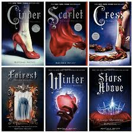
Storytelling Reflection 1
Hello readers and storytellers! Today I will be posting about my first storytelling experience, the planning, execution, and I will tell you a bit about how I think it went. Hopefully this may help others when planning out their storytelling or storytime.
This week the goal for our storytelling experience is to read a storybook aloud. I read both picture books and novels to my class of fourth graders quite often, so I felt confident that I could read a storybooks as well. The first thing I did was to figure out what book I wanted to read for this week. This was harder than anticipated because there are just so many good picture books out there! I wanted to read a book I would feel comfortable reading in front of students too, so I thought of picture books I have read before. I was deciding between A Bad Case of Stripes, The Bad Seed, The Day the Crayons Quit, Where the Wild Things Are, and many more. 
I eventually landed on reading The Bad Seed. The next step was getting the book. I had to borrow it from a friend because I could not find my copy. The last two things for me were deciding where to read the book (at work, at home, or somewhere else) and practicing reading the book for a brain refresher.
My Experience and Reflection
Looking back on my retelling, I would have to say I was not as confident as I thought I was going to be. Sure I read books aloud to my students all the time, but to record yourself is something completely different! I had to do so many takes until I got something I liked because I thought I was holding the book weird, or I wasn’t looking at the camera enough, and other random reasons.
For me, there were two parts of the planning and execution stages that I was most concerned with. First, deciding where to record the video was one of the harder parts of this assignment for me. If I did it at work, I didn’t want to disturb other classrooms around me if I got to loud (which is known to happen), and if I recorded at home, where would I sit to record and what if my dog makes noise. I decided on recording at home and hoping for the best. Some of my retakes were because my dog was crying because of the rain, or where in my home I was sitting to get the best video. In the end I figured I was psyching myself out for no reason.
The second part I was worried about was the actual reading. Sometimes while reading stories out loud to my students I stumble over words and have to fix the mistake, which I point out to the kids as something that is okay as I went back and tried again. A few of my retakes were because I would stumble over words, even though I had read the book to myself a few times before had. Stumbling over the words would make me a bit anxious and embarrassed with myself.
Finally, I just had to hype myself up and just go with the flow of reading the book, and to be okay if a small mistake was made or if you could hear my dog in the background. I had to remind myself that that’s just life. After doing that I felt a lot more comfortable recording myself reading The Bad Seed.
I have attached a link to my retelling of The Bad Seed below.
———————————————————————————————————
Readings for this week:
This week we had to read about different legends and folktales. Legends are something I have liked to read and learn about for a long time. Legends are “more than just a story, it has a bit of history to it. Typically, these stories started as oral stories that took on a life of their own.” (J. Betts). After reading some different folktales, I came to realize that they are great stories to tell, read, and learn about as well. “A folktale is an old story that's been told again and again, often for generations.” (vocabulary.com). Folktales are stories that are known to be told orally as well.
Legends:
1. Lady Godiva
2. Atlantis, the Lost City
3. The amazons
4. The Kraken
5. Robin Hood
6. King Arthur
Folktales:
1. Ali Baba & the 40 Thieves - Retold by Kate Daynes
2. The Princess & The Pea - Retold by John Cerh
3. How Rabbit Lost His Tail - Retold by Cynthia Swain
4. The Gingerbread Man - Retold by Jim Aylesworth
5. Chicken Little - Retold by Steven Kellogg
6. The Rough-Faced Girl - By Race Martin
———————————————————————————————————
Resources:
Betts, J. (n.d.). What is a Legend? Story Examples & Common Characteristics. Retrieved from yourdictionary.com. https://examples.yourdictionary.com/what-is-legend-story-examples-common-characteristics
John, J. (2017, August 29). The Bad Seed. Harper Collins.
vocabulary.com. (2022). folktale. Retrieved from vocabulary.com. https://www.vocabulary.com/dictionary/folktale











